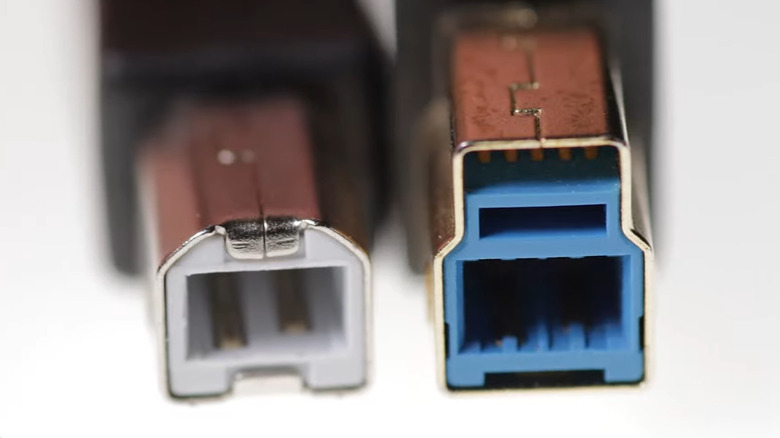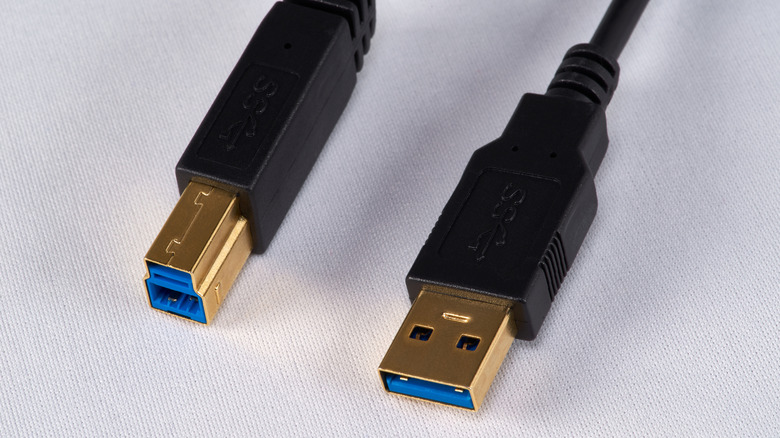What Is USB Type B And Which Devices Still Use It?
USB ports and connectors come in a variety of shapes and sizes. While you may be familiar with common types like USB Type-A and USB Type-C, there is also USB Type-B. It was introduced back in 1996 alongside USB Type-A. Unlike USB-A, the shape of USB Type-B connectors can vary depending on the version.
The USB 2.0 Type-B connector is square with slightly rounded corners at the top. In contrast, the USB 3.0 Type-B connector features a square design with a noticeable protrusion at the top. The larger shape accommodates nine pins, compared to four in other USB Type-B ports. These extra pins also help support faster data transfer. The difference in shape also means you cannot use USB-B 3.0 connectors with older USB-B 2.0 or USB-B 1.1 ports. However, USB-B 3.0 ports are designed to accept older USB-B connectors.
Like most USB ports, USB-B 3.0 ports are typically blue, while USB-B 2.0 ports are black, and USB-B 1.0 ports are often white. That said, this isn't always the case, as USB port colors are not standardized across all equipment manufacturers.
Which devices use USB Type B?
USB Type-B ports are commonly found on larger devices like printers and scanners. You'll also find them on external storage devices such as hard drives. Additionally, USB Type-B ports are used on musical equipment and networking hardware. All of these devices typically use a USB-A to USB-B cable to connect to a PC or laptop.
Some computer monitors also feature USB Type-B ports, which serve as upstream ports for the monitor's built-in USB hub. This setup allows you to connect peripheral devices like a keyboard, mouse, or storage devices, to your monitor's downstream ports, which then communicate with the computer. This is quite useful as it lets you plug USB devices directly into the monitor instead of running long USB cables to the PC.
There's also the USB Type-B Mini, a five-pin version introduced in the year 2000. It is commonly used in smaller devices where a standard USB-B port would be too bulky. This includes digital cameras, MP3 players, GPS units, and even some smartphones. With USB-C becoming the standard in most consumer electronics, USB Type-B is no longer widely used. However, you'll still find them on printers and other office equipment.

